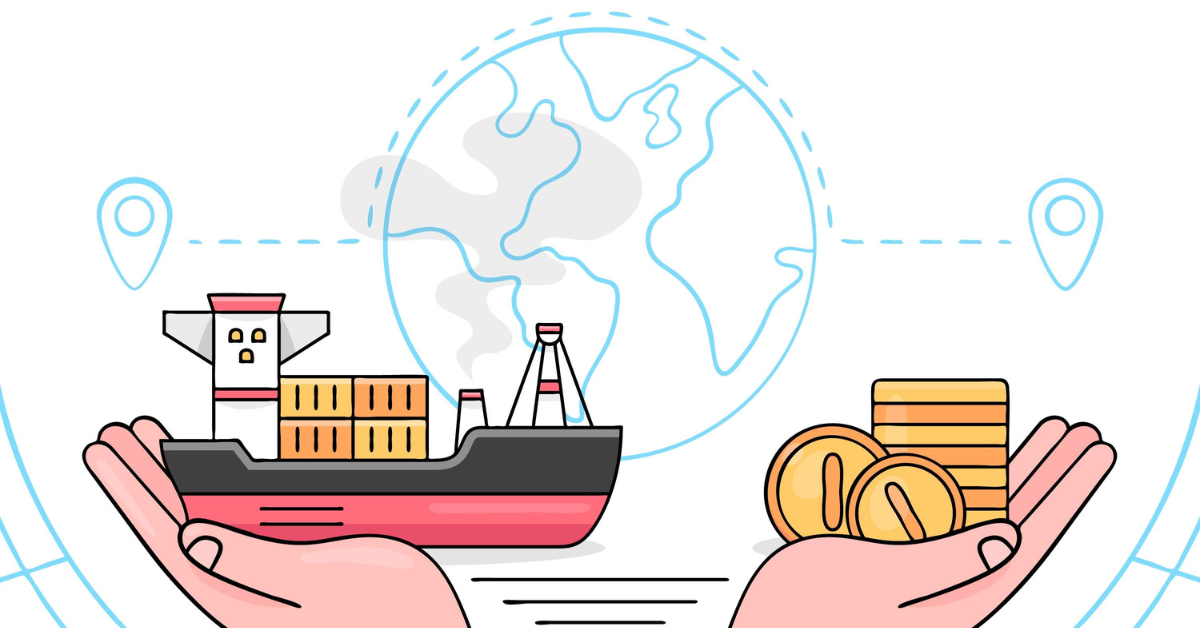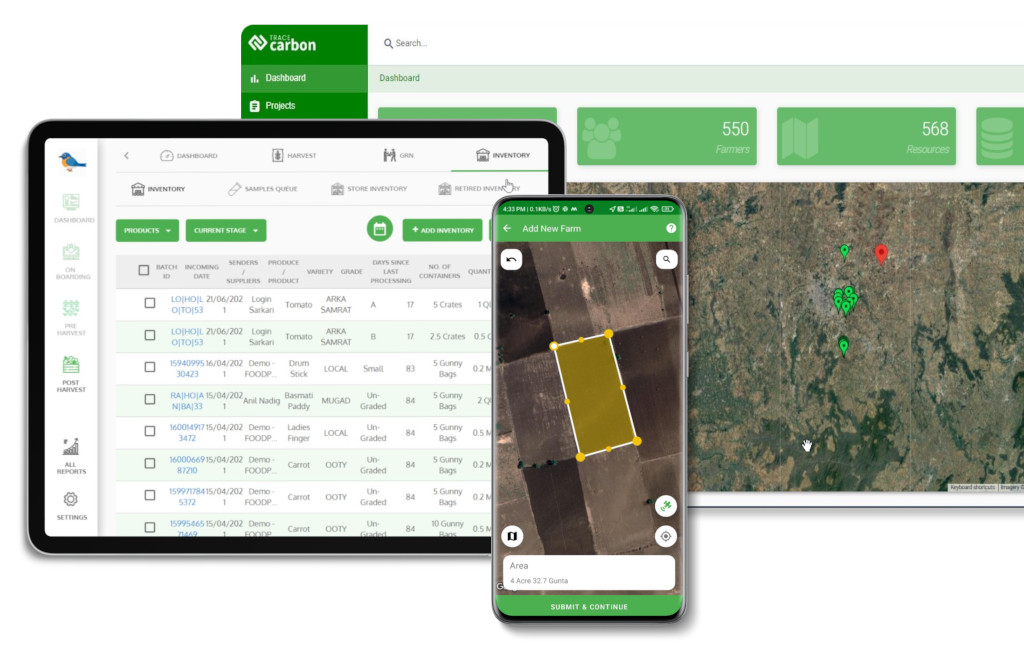Contact: +91 99725 24322 |
Menu
Menu
Quick summary: Discover the top 5 challenges exporters face under the EU Deforestation Regulation (EUDR) and learn how traceability tools, supplier engagement, and automation help ensure compliance, reduce risk, and secure EU market access.

EUDR Exporters face five major challenges: identifying if products fall under the regulation, collecting supplier and farm-level data, preparing accurate GeoJSON files, assessing deforestation risk, and ensuring smooth DDS filing in EU TRACES. Exporters can solve these hurdles by adopting digital traceability tools, automating compliance workflows, and engaging suppliers early to build transparent, deforestation-free supply chains.
Exporters to the EU are entering a new era of scrutiny. Starting January 2026, the EU Deforestation Regulation (EUDR) will demand that all shipments of soy, coffee, cocoa, palm oil, rubber, wood, and cattle products prove they are deforestation-free and legally sourced.
The pressure is real. For exporters, failure to comply doesn’t just mean a slap on the wrist; it could result in blocked shipments at customs, the loss of long-term buyers, and severe reputational damage in global markets.
But it’s not all bad news. With the right systems in place, exporters can turn these challenges into a competitive advantage by offering buyers exactly what they need: transparent, traceable, and compliant supply chains.
In this blog, we uncover the Top 5 challenges exporters face under EUDR, from supplier data collection to filing Due Diligence Statements (DDS), and share practical solutions to help you overcome them.
Key Takeaways
The EU Deforestation Regulation (EUDR) is often described as an importer’s responsibility, but the reality is very different. Exporters play an equally critical role. Without their cooperation, buyers in the EU cannot complete their Due Diligence Statements (DDS), making it impossible to place products on the EU market.
EUDR applies to seven key commodities: Soy, Coffee, Cocoa, Palm oil, Wood, Rubber, and Cattle (including beef and leather). Even if you are based outside the EU, if your goods eventually land in the EU market, you are part of the compliance chain. This means exporters need to align with new requirements just as much as importers.

Transparency isn’t just a compliance checkbox—it’s the foundation of trust. Exporters who can demonstrate clear visibility into sourcing practices reassure EU buyers that they’re credible partners, not risks to market access.
Traceability is the backbone of this system. It’s no longer enough to say where a product comes from—you must be able to prove it, from farm to export point. Exporters who master this will find themselves on preferred supplier lists as EU buyers screen out weaker links.
Geolocation Data is the hard currency of EUDR compliance. Regulators demand precise, farm-level coordinates in GeoJSON format, not vague region-level claims. Exporters who invest in capturing and validating this data now will avoid shipment delays, rejected filings, and downstream conflicts with buyers.
Support for DDS Filing is the ultimate test. EU importers rely on exporters to supply verified data so they can file their Due Diligence Statements (DDS) in TRACES without costly back-and-forth. Exporters who make compliance effortless for their buyers turn regulation into a competitive differentiator—buyers will naturally favor partners who reduce risk and paperwork.
EUDR shifts the burden of proof, but exporters who step up don’t just avoid penalties—they secure trust, win repeat business, and position themselves as leaders in the new era of sustainable trade.
Many see these requirements as EUDR compliance challenges, but forward-looking exporters recognize an opportunity:
In short, EUDR for exporters is not just about avoiding risks—it’s about creating a competitive edge. Those who adapt early won’t just keep market access; they’ll gain a stronger position in global supply chains where sustainability is no longer optional.
Not all suppliers are equal under EUDR. Learn how to evaluate risk, validate data, and build resilience with our Supplier Assessment in the EUDR Blog.
Smallholders are the key to compliance. Discover practical strategies to engage, train, and onboard small suppliers in our Onboarding Smallholder Suppliers for EUDR Blog.
EUDR exporters face new hurdles under the EU Deforestation Regulation, from identifying HS codes to generating Due Diligence Statements (DDS). Challenges include supply chain mapping, collecting farm-level GeoJSON data, conducting deforestation risk assessments, and preparing compliant DDS filings. With digital tools, automation, and AI-powered monitoring, exporters can turn these compliance hurdles into a competitive advantage in securing EU market access.
Many exporters are still unclear whether their products fall under the seven commodities regulated by EUDR (soy, coffee, cocoa, cattle, palm oil, rubber, wood). The complexity arises from reliance on HS codes, which vary by country and often overlap.
Export supply chains often extend across fragmented, smallholder-driven networks. Visibility drops beyond direct suppliers, making traceability difficult.
EUDR mandates farm-level geolocation coordinates in GeoJSON format, which many exporters lack the technical capacity to capture.
EU buyers must prove products are deforestation-free after Dec 2020. Manual assessments are slow, expensive, and inconsistent.
The Due Diligence Statement (DDS) is the EU’s compliance backbone. Exporters must provide verified data so importers can file it in TRACES.
A beef exporter uploads farm data but one polygon is incomplete. Customs blocks the shipment until corrected. With automated geolocation validation, the error would have been flagged before submission.
Suppliers, your data is the key to market access. Our GeoValidation Tool helps you easily check and validate geolocation polygons, with no technical skills required. Keep your buyers confident and your business moving.
A coffee exporter relies on 50 co-ops, but 3 fail to submit geolocation data. The buyer cancels the shipment. A supplier portal with reminders and escalation workflows could have prevented the bottleneck.

A soy exporter compiles DDS manually in Excel. An audit reveals missing risk assessment steps, resulting in fines. Automated DDS generation ensures every report is structured, complete, and TRACES-compliant.
An NGO challenges a cocoa exporter’s supply chain. The exporter can’t prove how risks were assessed because the records aren’t versioned. With TraceX-style audit trails, they could have shown evidence instantly and avoided reputational damage.

Exporters face some of the toughest hurdles under the EU Deforestation Regulation (EUDR): proving deforestation-free sourcing, managing complex supplier networks, and generating audit-ready Due Diligence Statements (DDS). Manual methods can’t keep up with the precision and scale regulators now expect. That’s why EUDR compliance software and exporter traceability tools like TraceX EUDR Platform are game-changers.
Exporters using TraceX to digitize compliance cut preparation time by up to 70%. Beyond time savings, they secure faster EU market access, reduce the risk of shipment delays, and position themselves as leaders in sustainable trade.
EUDR isn’t just another compliance checkbox—it’s reshaping how exporters prove trust and resilience in global trade. The real winners will be those who see these challenges not as barriers, but as opportunities to digitize, engage suppliers, and build lasting credibility. With the right tools, exporters can turn compliance into confidence and market leadership.
Due diligence is the backbone of EUDR. Learn how to structure your processes, assess risk, and stay audit-ready in our EUDR Due Diligence Blog.
Paper trails won’t cut it anymore. Discover how digital traceability tools streamline supplier mapping, automate records, and future-proof your compliance in our Digital Traceability for EUDR Blog.
Geolocation is non-negotiable under EUDR. Understand data requirements, accuracy standards, and how to validate polygons in our Geolocation for EUDR Blog.
Yes. Any exporter placing covered commodities (like beef, soy, cocoa, coffee, rubber, palm oil, or derived products) on the EU market must comply, regardless of size.
No. Certifications help but do not replace EUDR’s mandatory requirements, such as geolocation data, risk assessments, and DDS submissions.
Start digitizing supplier data, validate geolocation polygons, build internal DDS processes, and adopt compliance software. Early movers spread costs and reduce last-minute risks.
